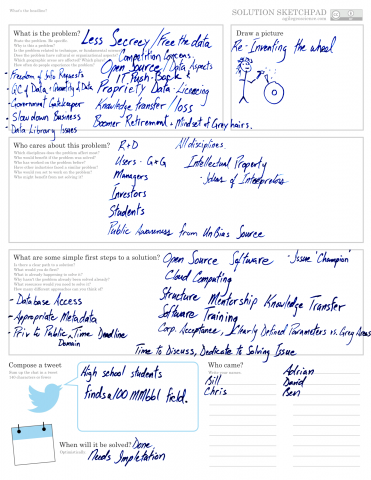EarthArXiv wants your preprints
/If you're into science, and especially physics, you've heard of arXiv, which has revolutionized how research in physics is shared. BioarXiv, SocArXiv and PaleorXiv followed, among others*.
Well get excited, because today, at last, there is an open preprint server especially for earth science — EarthArXiv has landed!
I could write a long essay about how great this news is, but the best way to get the full story is to listen to two of the founders — Chris Jackson (Imperial College London and fellow University of Manchester alum) and Tom Narock (University of Maryland, Baltimore) — on Undersampled Radio this morning:
Congratulations to Chris and Tom, and everyone involved in EarthArXiv!
- Friedrich Hawemann, ETH Zurich, Switzerland
- Daniel Ibarra, Earth System Science, Standford University, USA
- Sabine Lengger, University of Plymouth, UK
- Andelo Pio Rossi, Jacobs University Bremen, Germany
- Divyesh Varade, Indian Institute of Technology Kanpur, India
- Chris Waigl, University of Alaska Fairbanks, USA
- Sara Bosshart, International Water Association, UK
- Alodie Bubeck, University of Leicester, UK
- Allison Enright, Rutgers - Newark, USA
- Jamie Farquharson, Université de Strasbourg, France
- Alfonso Fernandez, Universidad de Concepcion, Chile
- Stéphane Girardclos, University of Geneva, Switzerland
- Surabhi Gupta, UGC, India
Don't underestimate how important this is for earth science. Indeed, there's another new preprint server coming to the earth sciences in 2018, as the AGU — with Wiley! — prepare to launch ESSOAr. Not as a competitor for EarthArXiv (I hope), but as another piece in the rich open-access ecosystem of reproducible geoscience that's developing. (By the way, AAPG, SEG, SPE: you need to support these initiatives. They want to make your content more relevant and accessible!)
It's very, very exciting to see this new piece of infrastructure for open access publishing. I urge you to join in! You can submit all your published work to EarthArXiv — as long as the journal's policy allows it — so you should make sure your research gets into the hands of the people who need it.
I hope every conference from now on has an EarthArXiv Your Papers party.
* Including snarXiv, don't miss that one!












 Except where noted, this content is licensed
Except where noted, this content is licensed